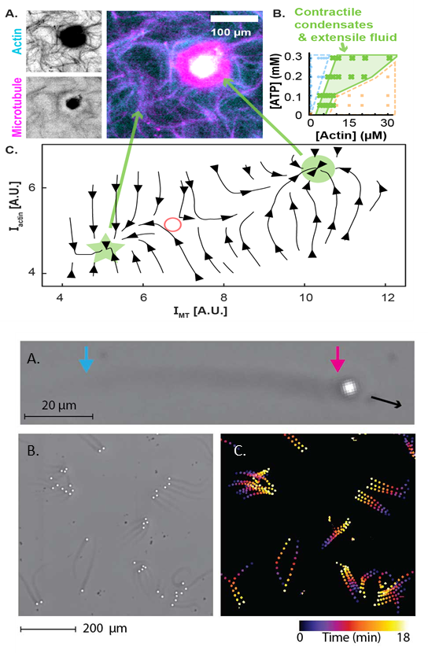2021
Highlights of IRG research are reported on an ongoing basis to the NSF MRSEC program.
2021

Brandeis graduate students recorded chemistry experiments which were then translated into Spanish for native Spanish speakers at Waltham High School.
The Brandeis MRSEC is committed to broadening participation of underrepresented groups (URGs) in science. This year, Zare and MRSEC PP, Grace Han, coordinated a virtual field trip for Spanish-speaking students at Waltham High School (WHS) featuring Brandeis graduate students from URGs and Spanish-language chemistry experiments.
The goal of the WHS Virtual Field Trip was to engage high school students through videos of chemistry experiments conducted by Brandeis graduate students. These videos were translated into Spanish and viewed during WHS Chemistry courses. Zare worked with WHS teachers to ensure that the experiments aligned with the class curriculum. Next, the same high school students were placed in small group discussions with Spanish-speaking Brandeis science students. These discussions focused on the Brandeis students’ journey to science and what day-to-day life in research consists of.
In the future, this pilot will transition to an in-person experience on Brandeis’s campus that will allow high school students from URGs to see chemistry experiences first-hand followed by a mentoring lunch with Spanish-speaking Brandeis graduate students.
(a) Schematic of a DNA origami shell assembled around a virus. (b) Electron microscopy images of two DNA origami half-octahedral shells engulfing an HBV core. (c) Image of partial DNA origami icosahedral shell. (d,e) Images of partial icosahedral shell assembled around (d) one HBV core and (e) three HBV cores.
Researchers have developed programmable DNA origami building blocks that self-assemble into icosahedral shells, with programmable sizes.
The shells can be functionalized with antibodies, enabling them to engulf and neutralize natural viruses.
Blocking infection requires just one binding event between the virus and encapsulating shell. In contrast, the traditional antibody approach for virus neutralization must bind hundreds of viral surface proteins due to their high redundancy in attachment to host cell surfaces.

MT-actin composites (A) lead to novel states (B) that exhibit coexistence of extensile and contractile fluids (C) Actin polymerization propels beads (A) which, when confined to flow chambers (B), exhibit collective motion
Active materials are systems that are driven by nano scale components that consume energy and produce work. In this work, two new biochemically powered active materials were developed with unique properties that will allow for a systematic exploration of emergent non-equilibrium phenomenology.
The first system is an MT-Actin composite that provides independent control of active and passive stresses. This unprecedented control leads to novel nonequilibrium steady states including coexistence of contractile and extensile active materials in a single system.
The second is an active material composed of beads that are propelled by actin polymerization. This motor-free biochemical active material provides the template to build a new class of active materials that leverage polymerization forces.